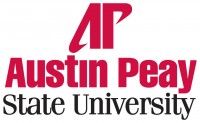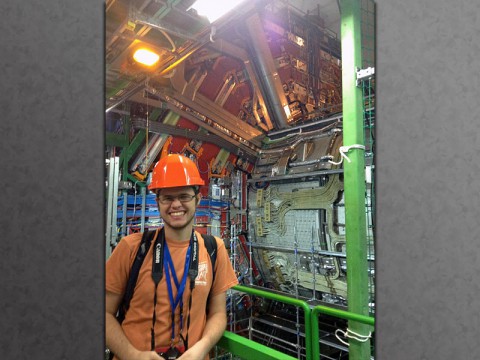 Clarksville, TN – When Austin Peay State University student Chris Hayes returned to Clarksville last summer, after spending nine weeks at the famed CERN laboratory in Switzerland, his friends and professors asked him what he thought of Europe.
Clarksville, TN – When Austin Peay State University student Chris Hayes returned to Clarksville last summer, after spending nine weeks at the famed CERN laboratory in Switzerland, his friends and professors asked him what he thought of Europe.
“I said, ‘Well, I think it looks a lot like East Tennessee, except that the signs are in French,” he said. “It felt very much like I was at home.”

“It was very much a great feeling to know that our professors are that close-knit as well,” he said. “We’re doing this as well as a large-scale facility.”
Last summer, Hayes was one of only 13 students from across the country to participate in a highly competitive University of Michigan Research Experience for Undergraduates (REU) program at the CERN lab. The enormous, concrete facility opened in 2008 with a 16-mile long tunnel buried 300 feet beneath it. That tunnel is where the $6 billion Large Hadron Collider (LHC) smashes subatomic particles in an effort to recreate the “big bang” that spawned the universe.
“But one of the bigger things about the CERN community was actually the people,” Hayes said. “You’d be walking down the hallway or sitting at breakfast and suddenly you’d see a famous physicist show up. And when they asked to sit down, you’re like, ‘OK, let me not say anything to make them laugh or think I’m not a physicist.’”
The CERN facility is like a small city, with its own restaurants and a hotel/hostel for visiting scientists. Hayes lived on-site, waking up each morning and walking about 200 feet to his office to begin work.
“I was working on updates for the LHC,” he said. “The LHC is being upgraded to reach higher collision rates and higher energies. The physical updates of the LHC also requires a lot of updates to the computational simulations under these new conditions. We’re breaking into new physics. We don’t know exactly what’s going to occur.”
Hayes worked for hours each day on computer simulations of high-energy collisions, aiding in the development of computational analysis related to the Higgs boson. The particle’s namesake, Peter Higgs, recently was awarded the Nobel Prize in Physics.
“For a good while, it didn’t hit me that, ‘Wow, I’m doing research that people care about immediately,’” Hayes said. “Then I’d have a conversation with people who were at MIT in Massachusetts, or people in Japan who were asking, ‘What did you find?’ And I thought, ‘I’m talking to people across the world who actively care about the direction my research is going. This is amazing.’”
Hayes is now back at Austin Peay, finishing up his senior year and sharing his experiences at CERN with his classmates and professors. He gave a presentation in October to APSU physics students, and in September, he discussed his work with members of the Tennessee Board of Regents. His focus now is on applying to graduate school, and he plans to list CERN prominently in each application.


